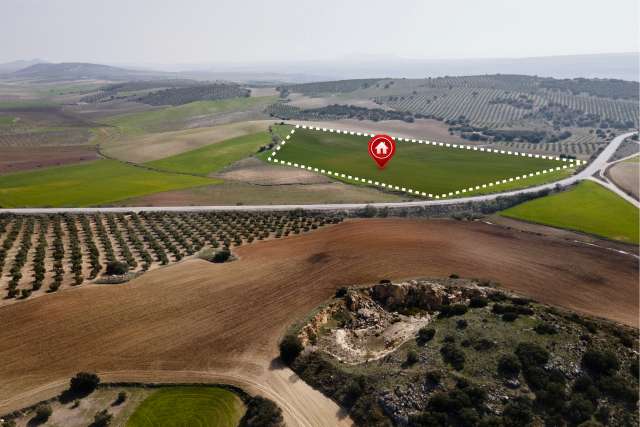The Definitive Guide to Lot Selection for Your Custom Home: A Due Diligence Report - part 2

Macro-Level Due Diligence: Analyzing the Neighborhood and Its Trajectory
A parcel of land does not exist in isolation. Its present and future value, along with the quality of life it will afford, are inextricably linked to the character, convenience, and developmental trajectory of the surrounding community. Before any detailed inspection of a specific lot, a thorough macro-level analysis of the broader neighborhood is essential. This wider lens provides the context needed to determine if the area aligns with long-term financial and lifestyle goals.
Experiential Research and Lifestyle Compatibility
Data and maps can only tell part of the story. To truly understand a neighborhood, one must experience it directly. This immersive research provides qualitative insights that are just as important as quantitative data.
- Immersive Investigation: A single drive-by is insufficient. It is crucial to visit the prospective neighborhood at various times of the day (morning rush hour, midday, evening) and on different days of the week (a busy weekday versus a quiet weekend). This practice reveals the true rhythm of the community, including typical traffic patterns, ambient noise levels (from traffic, schools, or commercial activity), and the general level of activity.
- Commute Analysis: Online map services provide estimates, but they cannot replicate real-world conditions. The only way to accurately gauge commute times is to perform a test drive from the potential lot to key destinations, such as workplaces and schools, during the exact times of day one would normally be traveling. This simple exercise can uncover traffic bottlenecks and frustrations that would otherwise be a daily surprise.
- Amenity Proximity: Convenience is a cornerstone of quality of life and a significant driver of property value. Before settling on an area, a prospective homeowner should create a prioritized list of their family's essential and desired amenities. This includes daily needs like grocery stores and pharmacies, regular destinations like gyms and parks, and important services such as healthcare facilities and restaurants. The accessibility and quality of these amenities should be a primary consideration in the selection process.
- Community Vibe: The most valuable information often comes from the people who already live there. Taking the time to walk the neighborhood and speak with potential neighbors can provide invaluable, unvarnished insights. Residents can offer perspectives on the community's social dynamics, local issues, the reputation of the schools, and the history of the area that cannot be found in any public record.
Evaluating Educational and Community Infrastructure
Beyond immediate lifestyle factors, the quality of the underlying community infrastructure is a key indicator of long-term stability and value.
- School Districts: The quality of the local school district is one of the most powerful drivers of residential property values. Even for households without school-aged children, a highly-rated school district ensures a broader pool of potential buyers in the future, supporting strong resale demand. Research should include not only standardized test scores and official ratings but also community perception, program offerings, and the condition of school facilities.
- Safety and Crime Rates: A sense of security is fundamental to a home's enjoyment. It is prudent to research local crime statistics and trends using publicly available data from local law enforcement agencies and online crime mapping tools. Look for trends over time, as a declining crime rate can be a positive indicator of a neighborhood's trajectory.
Investigating Future Development and Municipal Plans
One of the most critical and frequently overlooked aspects of lot selection is understanding what the future holds for the surrounding area. A tranquil view of open fields today could become a noisy six-lane highway or a sprawling commercial center tomorrow. Proactive research into future development plans is essential to avoid negative surprises and to identify opportunities.
- Information Sources for Future Plans: A multi-pronged approach is necessary to build a complete picture of a region's future.
- Municipal Planning and Zoning Departments: This is the most authoritative source. Every city or county has a long-term "Comprehensive Plan" or "General Use Plan" that outlines development goals, land use policies, and major infrastructure projects for the next 5, 10, or 15 years. The staff at these departments can be an invaluable resource for interpreting these often-complex documents. Many municipal websites now offer sophisticated tools like interactive zoning maps, development project trackers, and searchable databases of permits and public meeting minutes.
- Public Records: Reviewing the agendas and minutes from recent city council and planning commission meetings can reveal early discussions about proposed zoning changes, new subdivisions, or major commercial projects. Monitoring the issuance of building permits and significant land transactions can also signal where development is heating up.
- Local News and Community Forums: Local newspapers, regional business journals, and community newsletters are often the first to report on major new development proposals. Online neighborhood forums, such as local Facebook groups or Nextdoor, can also be a source of information and resident sentiment about upcoming projects.
- Your Professional Network: An experienced land agent and a well-connected local builder will have their fingers on the pulse of the local development scene. They often have insider knowledge of projects that are not yet public, providing a significant strategic advantage.
This investigation into future development is not merely a defensive measure to avoid proximity to undesirable projects like landfills or power plants. It is also an offensive strategy to identify positive catalysts that can accelerate property value. The same municipal plans that reveal potential risks also highlight areas targeted for strategic growth and public investment, such as new parks, libraries, schools, or public transit extensions. The causal relationship is clear: strategic public and commercial investment attracts more residents and businesses, which in turn drives up housing demand and property values. A sophisticated buyer, therefore, looks for both red flags and green flags. By cross-referencing a city's comprehensive plan with its capital improvement budget, one can pinpoint areas poised for significant appreciation. Purchasing a lot in such an area before the planned improvements are widely known or completed can result in substantial, built-in equity appreciation that goes far beyond the value added by the custom home itself. This transforms due diligence from a simple act of risk avoidance into a proactive investment strategy.





